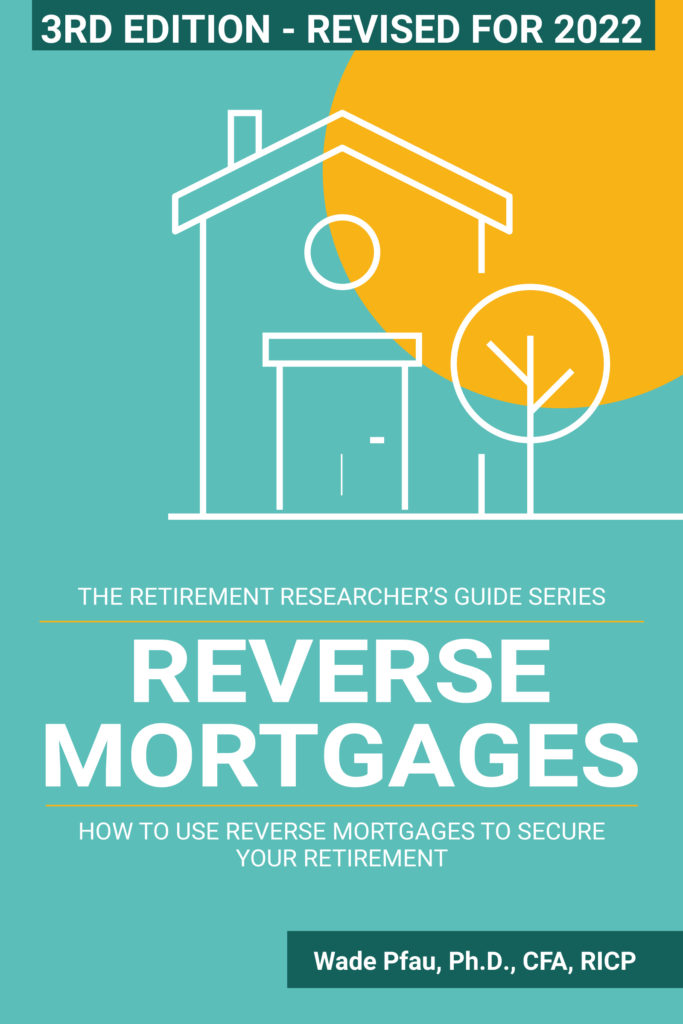Wade Pfau, professor of retirement income at the American College of Financial Services and founder of RetirementResearcher.com, has released a new edition of his reverse mortgage-specific book to take the new product landscape and economic realities into account in informing people how the tapping of home equity works in retirement.
Because there is so much general resistance to the reverse mortgage product concept, Pfau’s book aims to illustrate that such products can help to provide a more stable retirement when cleverly implemented. To discuss the creation of the original book as well as the new content in the latest edition, Pfau sat down with RMD in the latest episode of The RMD Podcast.
Over the course of the discussion, Pfau discusses the creation of the book, what went into the changes he’s made, how he decided on the new information to include as well as specific occurrences like the transition away from the London Interbank Offered Rate (LIBOR) index for adjustable-rate Home Equity Conversion Mortgages (HECMs).
The creation of the book, formulating the 2022 edition
The initial creation of a reverse mortgage book from Pfau came from his determination to write a more general book on retirement planning, he says. As “professor of retirement income” at the American College, Pfau says he felt a duty to understand all the different and unique aspects of retirement he could, which invariably led him to reverse mortgages.
“I didn’t know a lot about reverse mortgages, but I was invited to Shelley Giordano’s Funding Longevity Task Force meeting, and John Salter sent me a stack of articles about reverse mortgages,” Pfau explains. “I read through them on the plane and was just fascinated. So as I started to write the chapter about housing wealth and home equity for this broader retirement planning book, […] the chapter about homes and home equity got to be of such a length that it ended up being my first book in 2016: a book on reverse mortgages.”
Pfau says that publishing the reverse mortgage book’s first edition was a way to test the process of book publishing in his specialist arena, and he was very pleased with the results. The influential reverse mortgage product changes of October, 2017 led to the development and publication of the book’s second edition, and now there is a new opportunity to revise the book, he says.
“Now that I’ve finished that general retirement planning book [last September], I saw an opportunity now to revisit reverse mortgages and see what I could do to make some tweaks and adjustments now that I’ve covered all the different aspects of retirement planning,” he says.
While there is some crossover to be found between certain information found both in the broader retirement planning book and the reverse mortgage-specific book, the more specific offering goes into much more granular detail about the way the products work and how they can interact with different retirement scenarios, he says.
Reverse mortgage changes: LIBOR, and the way the loans work
While there are certain details worth including in a reverse mortgage book in relation to changes that have taken place since late 2017, many of those changes are not nearly as seismic as the 2017 changes were, Pfau says. Still, the fact that specific details have changed warranted an update to ensure that people had access to readily available retirement information.
“It actually it seems like we’re overdue for a big adjustment, just looking at the history over the past 10 or 15 years,” Pfau says. “So with this third edition, there was nothing significant like what happened in October 2017, in terms of needing to start from scratch and really look at everything from the beginning. We haven’t seen any major changes like that recently, other than phasing out LIBOR and so forth. But that’s not so much from the reverse mortgage industry as it is more of an external event.”
Considering that Pfau always has to remain aware of what’s going on in the world of reverse mortgages, taking stock of any new details of changes for the book was prudent, he explains. The change handed down in 2021 moving the HECM program away from the LIBOR index also needs more time before it’s fully understood.
“I really view it as we’re in the phase of using Treasury rates, as opposed to using LIBOR rates,” Pfau says. “They generally track or trend together pretty closely. So I don’t know for the end consumer how much difference there is, it was just a matter of taking that LIBOR language out and replacing it with the Treasury rate. We’ll further monitor to see how that evolves as well, as that was the biggest real change.”
For this new edition of the book, one key change made by Pfau centered around how he explains the ways in which a reverse mortgage works.
“[This edition moves] away from the old Monte Carlo simulation approach that’s guided a lot of the past research, and tries to just provide some more intuition for thinking about actually walking through the steps, looking through with historical data and how the reverse mortgage operates. That helps explain why it can actually contribute to a better outcome of the retirement plan.”
Much of the original reverse mortgage research spearheaded by the likes of Barry Sacks, John Salter and Harold Evensky in 2012 used “Monte Carlo simulations.” This involves the use of randomized sequences of market returns to test how different retirement strategies respond in different simulated market environments, Pfau explains. Those have been phased out of this edition of the book. One of the major reasons came down to context.
‘Monte Carlo’ simulations vs. historical data
“I always felt that [Monte Carlo simulations] left a black box where people reading that research may not really understand the inner workings of what’s going on behind the scenes,” he says. “Maybe it runs 10,000 simulations and reports a 70% probability of success, but people couldn’t really walk through or understand what’s going on that drives that particular outcome.”
When people do retirement simulations, there are two general options, Pfau explains: Monte Carlo simulations, or using historical data and applying different strategies to corroborated data from the past. For instance, using historical data can compare what a reverse mortgage would do for a retiree if they were navigating market conditions observed between 1950 and 1980, he explains.
“It’s an important caveat to point out, of course, that reverse mortgages didn’t exist in 1950,” he says. “So it’s a matter of applying today’s laws, regulations, tax system and so forth. But then just saying, starting from today, what if the retiree got the market returns from 1950 to 1980, or whatever the case may be, and seeing how it plays out? I think that can give more context for people to understand that if they had retired at such a such a time, historically there was a high inflation environment. Or, there was a period of good or poor market returns, and then actually being able to walk through step by step with those historical numbers.”
This can answer questions about how different retirement strategies — such as more coordinated plans or “last resort” options — would have worked for different people in different eras with full historical context, without the more randomized elements of a Monte Carlo strategy, he says.
“I think switching to the historical data in that manner just makes it easier for people to follow the steps of what’s actually going on in a way that you could still do with Monte Carlo simulations,” he says. “It’s just there’s no context behind the Monte Carlo simulations and the way that there is with historical data.”
Listen to the discussion on The RMD Podcast.





